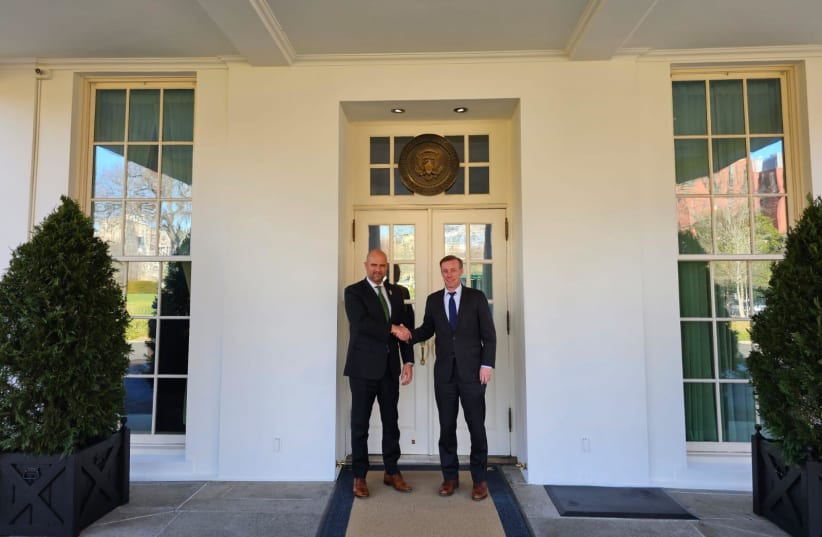Features
West Bank emerges as Israel’s primary security threat – analysis

Israel has not gotten back the hostages, and many of them have died since February, but that is a complex political and diplomatic decision and less of a straight military decision.

No one is saying this explicitly, but the 2023-2024 Middle East war is basically over.
Surprisingly, what this means is that the greatest near-term danger to Israeli security will return to being the West Bank, as it was before this war.

How does that make any sense?
First, the IDF defeated most of Hamas militarily by February, and after waiting three months, in May-June, Hamas was finished off in Rafah.
Israel has not gotten back the hostages, and many of them have died since February, but that decision is not only a military one; it is a political and diplomatic one as well.

Israeli soldiers inspect the Shavei Shomron checkpoint, west of the West Bank city of Nablus, November 12, 2024 (credit: NASSER ISHTAYEH/FLASH90)
Putting the hostages aside for a second, from a security perspective, Hamas had not presented a real danger to civilians since its last major series of rocket volleys in January (it had a very short large barrage in May when Rafah was invaded but that was just firing off the last remaining inventory.)
West Bank emerges as Israel’s biggest security threat
This means that for the last five to nine months, what actually was endangering Israelis, especially civilians, was the northern front.
Until September and early October, when the IDF killed Hezbollah chief Hassan Nasrallah and many of the group’s other leadership figures, destroyed its long-range missiles, and took over southern Lebanon, Hezbollah was unwilling to cut a ceasefire deal without one for Gaza.
Israel’s blitzkrieg of Hezbollah changed that position, and with the Iranian proxy terrorist group out of the war, the Houthis and Iran are effectively out as well from being an active security threat in the near future.
The Houthis were always a sideshow, mostly acting at Iran’s urging so that Tehran would not need to act itself.
For the Islamic Republic, the war has been a disaster, as it has potentially uprooted years of work to establish Hezbollah and Hamas as deterrents to Israel attacking Iran directly. Israel also destroyed most of Iran’s best air defense capabilities and significant portions of its ballistic missile production, leaving Tehran more vulnerable than it has been in a long time.
It has been long past time for Iran to cut its losses to try to rebuild its old strategy – or to quietly work on a new one.
If Hezbollah, Iran, and the Houthis are out, that really only leaves Gaza – which again is more of a political issue now than a military one – and the West Bank. Technically, Syria and Iraqi militias are separate fronts, but they will also stop attacks given Iran and Hezbollah dropping out.
Unlike Gaza, though, the West Bank looms as threatening as ever, its trends much deeper and harder to stem.
Despite the IDF becoming far more aggressive with airstrikes and other elements of its power in the West Bank since the summer, the number of deadly attacks has not really dropped compared to the average for 2024.This is bad news, as the average for 2024 was far above the pre-war average.
In fact, most of the news cycle has forgotten that the West Bank has been on fire with terror since March 2022.
One of many reasons that the Gaza border was unprotected on October 7 was that many forces that had been there in 2021 were shifted to the West Bank on and off, starting from the waves of terror that began in 2022.
For example, in 2021, there were under 10 battalions in the West Bank, but starting in 2022, to maintain order, there were often between 25-30 battalions – some of which were moved from the Gaza border.
And, as bad as this is, it is not even the wrong move. In other words, there should have been way more troops on the Gaza border at all times and for many years, but comparatively, for much of 2022-2023, the West Bank was objectively the greater threat.
Prime Minister Benjamin Netanyahu and Defense Minister Israel Katz partially recognized this by finally approving a new Jordan border fence on Tuesday.
Iran has been trying harder than ever over the last two years to smuggle high-quality weapons into the West Bank to help terrorist groups there commit more dangerous terror attacks.
This will continue to be a focus for Iran because it is an indirect way to confront Israel, and Iran will have more plausible deniability than on other fronts because the terror actors will be Palestinian terror groups with whom there is no ceasefire anyway.
This new fence will be designed to better confront that threat.
However, the fence will take time, so keep a close eye on terror attempts in the coming months before it is up.
Even if a ceasefire is reached in Gaza, no past Gaza ceasefire has bound all terror groups in the West Bank.And the West Bank also has much more spontaneous terror because there is no enforceable border.
Settlements and Palestinian towns are wrapped around each other so tightly and in too many ways to fully police the area all of the time.
In other words, to solve terror in the West Bank, there will also need to be a diplomatic element, something no one has bothered discussing since this war started and not much since before the war either.
Until that diplomatic element moves forward, even with quiet on all of the other fronts, the West Bank will remain a near-term threat, and right now, probably Israel’s largest.

























